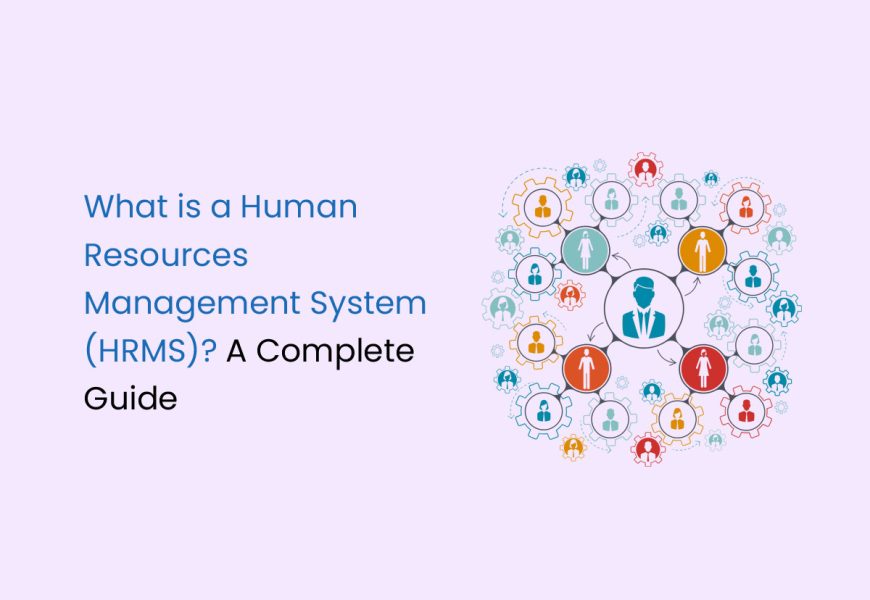No one is unaware of HR’s crucial role in ensuring that organisations operate efficiently and effectively, both now and in the future. With the right tools and data, HR professionals can make informed decisions and demonstrate their value, positioning them as some of the most essential members of the C-suite. Deepening their understanding of cloud and digital technology can significantly contribute to creating and maintaining a productive workplace that utilises cloud-based human resource management system (HRMS).
HR departments must modernise and transform to stay aligned with business goals. As agents of change, HR professionals must select the right cloud-based HRMS to effectively manage the entire employee lifecycle. Traditional on-premises solutions often result in core HR functions like payroll and benefits being managed in separate, disconnected systems. These systems usually lack integration with those used for talent management, workforce optimisation, and learning. This fragmentation hampers ease of use, degrades the user experience, and makes it challenging to analyse data for valuable insights.
As HR continues to be vital in keeping organisations running smoothly, their adoption of cloud and digital technology becomes even more critical. This article will be your guide if you are still confused about HRMS. We will discuss its utility, benefits, evolution and much more.
What is the Full Form of HRMS?
The full form of HRMS is Human Resource Management System. HRMS is also commonly known as Human Capital Management (HCM) software. It is useful in multiple capacities, whether it is to streamline, automate, or centralise essential HR functions like employee data management, benefits administration, time and attendance tracking, and payroll processing. An HRMS can also help enhance talent management efforts as it offers features for recruitment, onboarding, performance management, goal setting, learning and development, compensation, and succession planning.
A modern HRMS can replace traditional, labour-intensive tasks—often reliant on spreadsheets and paper—with automated, efficient processes. This shift not only reduces the risk of human error but also enables teams to focus on more strategic, high-value activities, leading to a more rewarding and impactful work environment.
Why is Human Resource Management System (HRMS) Important?
A lack of integrated information across all HRMS systems hinders vital talent management efforts. This fragmentation leads to less efficient HR activities and limits the insights that could be gained if a unified system of record and a cloud-based deployment model were in place.
As a result, HR organisations still relying on disparate solutions are missing out on benefits that could significantly enhance their strategic value to the enterprise. These benefits include:
- Lower HR Costs: Traditionally, HR has depended on IT to maintain on-premises HR systems. However, with the advent of mature, cloud-based HR solutions, this is changing. These cloud-based HRM systems are easy to configure and adapt over time, returning control to HR while significantly reducing the number of employees needed for deployment, management, and support.
- Faster HR Innovation: Upgrading an on-premises HRMS is often a time-consuming and costly process that involves multiple machines. In contrast, the cloud drastically reduces deployment times and provides easy, instant access to updates and innovations. This allows organisations to benefit from new features and improvements much more quickly.
- Enhanced Employee Engagement: The most effective HR solutions are those that employees, managers, and HR staff equally embrace. Cloud-based human capital management (HCM) systems are leading the way in revolutionising workforce management by offering unified employee experiences, connect-anywhere capabilities, and role-based functionality for the entire team.
Evolution of Human Resource Management System
The 1970s saw a shift in traditional practices when larger companies began digitising basic processes. They focused on data-heavy and error-prone functions like payroll and accounting. However, these early human resource management systems were limited in their capabilities. By the 1990s, advancements in mainframe computing and the advent of the Internet enabled businesses to digitise and automate a broader range of core HR functions, including records management, benefits administration, and recruitment workflows.
Today, the expansion of smart technologies and cloud connectivity has transformed HR processes beyond mere transactional data. Modern HRMS systems can now gather and integrate data to adjust reporting structures in real-time, accounting for regional differences in infrastructure, laws, and regulatory compliance. Additionally, these systems automate workflows and utilise artificial intelligence (AI) to create smarter, more efficient processes.
HRMS, HRIS, and HCM: What Do They Mean?
Human resource management system (HRMS), human resource information systems (HRIS), and human capital management (HCM) are terms often used interchangeably in HR, but they have distinct differences. Let’s discuss them briefly down below:
An HRIS typically relies on a database of employee information and supports core HR processes that are linear and quantitative, such as payroll processing and time and attendance management.
In contrast, an HRMS encompasses all the data management features of an HRIS but also includes more complex and qualitative functions, particularly in talent management. The most advanced HRMS solutions leverage smart technologies like AI, machine learning, and cloud connectivity to personalise and intelligently automate these functions.
HCM is a broader term that refers to the entire set of practices and software an organisation uses to manage its workforce, from recruitment to retirement. An HCM system is often synonymous with an HRMS and includes HRIS software. Thanks to technological advancements and enhanced connectivity, businesses can now gain a comprehensive, end-to-end view of their workforce. This has underscored the measurable value of prioritising the employee experience and adopting a people-first approach to HR administrative functions. This holistic perspective marks a shift in how HR processes are prioritised and managed.
Who Needs Human Resource Management System (HRMS) Software?
Traditionally, many HR functions operated in silos, with feedback or new data in one area not necessarily influencing others. A modern HRMS optimises and enhances processes for various professionals, all the while ensuring that the data they gather and the feedback they provide are shared, contributing to the broader realm of people analytics.
- HR Professionals: For HR teams, an HRMS is invaluable, offering everything from basic editing and access to employee data to delivering complex, data-driven reports and automating advanced talent management tasks.
- Recruiters: HRMS tools provide recruiters with a centralised platform to post job requisitions, source and nurture candidates, and customise onboarding processes.
- Managers: Using HRMS software, even from mobile devices, managers can oversee team structures, track time and absences, approve vacation and time-off requests, and monitor employee performance to determine if additional support or feedback is needed to help employees meet their goals.
- Employees: A single, user-friendly portal allows employees to update their personal information, view organisational charts, submit time and vacation requests, access learning assignments, and manage their career goals and development plans.
- Candidates: Modern candidates benefit from dedicated HRMS portals that enable them to search and apply for jobs, track application statuses, and accept job offers digitally through electronic signatures.
Components of a Good HRMS Software
One has to understand the reason what makes a human resource management system good. Their main aim is to provide clarity and simplification of the workplace system. HRMS is key in bringing the data together to make things easier for a company. They also provide important insight by analysing the data coming from different departments and sources. Since these systems are so multifaceted in their approach, they need to be just as multifaceted to deliver on all of their KPIs. Let’s discuss some of the core elements of any HRMS software.
HRIS
- Employee Self-Service: HRIS tools enable both employees and team leaders to eliminate the clutter of outdated, paper-based HR tasks. Self-service, mobile-friendly features boost productivity and transparency across various areas, including employee data management, reporting, analytics, time and attendance, and payroll.
- Benefits Management: With the rise of hybrid workplace models, businesses face increasing challenges in managing diverse benefits requirements across India. Automated benefits administration helps HR teams escape the burden of extensive paperwork, allowing them to focus on providing valuable advice and guidance to employees. Self-service, mobile-friendly portals further empower employees to monitor benefits for themselves and their families.
- Time Management: Payroll leakage, often caused by inaccurate timekeeping practices, can cost businesses up to 2.5% of their total payroll expenses. While sometimes intentional, it is usually due to errors from outdated systems and manual practices. Fortunately, this type of operational loss is highly preventable. Intelligent HR software solutions can significantly reduce such losses by automating time management. HRMS tools are highly customisable, allowing synchronisation with holidays, accruals, and other business rules. Automatic calculations of time and pay are integrated with payroll functions, and employees have self-service access to view and manage their timekeeping accurately.
Talent Management
- Recruitment and Onboarding: Despite the significant rise in unemployment due to COVID-19, employers are facing challenges in finding and attracting candidates due to shifting attitudes and expectations. HRMS solutions can optimise the recruitment process, helping employers source top talent globally and manage candidate relationships effectively. These systems also offer comprehensive applicant tracking and streamlined processes to support succession planning. For new hires, HRMS onboarding tools provide a portal with paperless, automated workflows, creating a more engaging and personalised onboarding experience.
- Performance and Compensation Management: Managing employee performance requires balancing both qualitative and quantitative data objectively. HRMS tools assist in setting and reviewing employee goals, offering continuous performance management and guided action planning. When it comes to compensation, these systems help by assessing various internal and external factors, making compensation planning and design more efficient.
- Learning and Professional Development: Employee growth and career development are vital to the overall employee experience. HRMS tools leverage smart technology to deliver personalised and engaging learning experiences, connecting employees with relevant information and experts within and outside the company. These tools help employees organise their time and career goals, schedule mandatory training, and integrate long-term objectives like leadership development and succession planning into their schedules, tailored to their unique needs.
- Sales Performance Management: Sales teams perform best when they focus on selling and nurturing leads. An HRMS helps businesses streamline and centrally manage sales-related tasks, such as commissions, territories, quotas, and agent performance, allowing sales teams to focus on what they do best.
Analytics and Workforce Planning
Data-driven insights are essential for aligning HR with a company’s overall strategy. By utilising metrics, KPIs, reporting, predictive workforce modelling, and AI-powered analytics, HR leaders can more effectively support strategic and operational planning, budgeting, and performance management.
Employee Experience Management
With a growing emphasis on the employee experience, businesses need innovative ways to understand how employees feel about their work, from their first day as a candidate to the day they leave. Technologies like Voice of the Employee (VoE), 360-degree feedback assessments, surveys, and behavioural and sentiment analysis help gather this information. By using these insights, organisations can personalise each employee’s experience throughout their time with the company, ultimately increasing engagement and productivity.
HRM Systems and the Next Steps to Digital Transformation in HR
Digital transformation in HR, like any significant operational change, can encounter initial resistance and challenges. To successfully navigate this transition, it is essential to communicate the project’s aims and goals. By maintaining open lines of communication between team leaders, executives, and HR specialists, you can begin to dismantle barriers. Effective change management and strategic planning will help secure early buy-in from your teams, making the transformation smoother and more effective.
Here are some key checklist items to consider as you embark on your HR digital transformation:
Data Integrity
Before starting the data migration process, ensure you have the right resources in place. Upskill or reskill your IT team to handle the migration effectively and minimise human error. Accurate and clean data is crucial for the success of your new HRM system.
Costs and Effort
Assess the project requirements across all affected areas of the business, including implementation and integrations. Establish realistic budgets and timelines to ensure successful deployment. Understanding the financial and effort commitments upfront helps in planning and managing expectations.
Current and Future Needs
Collaborate closely with department and team leaders from the outset to understand their specific goals, requirements, and challenges. Ensure that your HRMS is scalable and can adapt to the evolving needs of all stakeholders, supporting both present and future demands.
Compliance
Identify and define all regulatory, employment, and legal requirements relevant to your organisation. Confirm that your new HRM system supports these needs across all regions in which you operate. Compliance is essential to avoid legal issues and ensure smooth operations.
Readiness at Launch
Engage your HR team early in the process to help develop training schedules and set achievable goals. Establish monthly milestones to ensure that administrators, managers, and employees receive proper training and are prepared to utilise the full capabilities of the new HRM system. This preparation helps maximise the system’s value from day one.
Additional Steps for a Successful Transformation
- Stakeholder Engagement: Involve key stakeholders throughout the transformation process to ensure their needs are met and to foster a sense of ownership and commitment.
- Continuous Communication: Maintain regular updates and feedback loops to inform everyone and promptly address any concerns.
- Change Management: Implement structured change management strategies to guide your organisation through the transition, addressing resistance and encouraging acceptance.
- Technology Integration: Ensure that the new HRM system integrates seamlessly with existing technologies and workflows to enhance efficiency and reduce disruptions.
- Performance Monitoring: After implementation, continuously monitor the system’s performance and gather user feedback to make necessary adjustments and improvements.
These steps focus on clear communication, thorough planning, and stakeholder involvement so your organisation can successfully transform its HR operations.
In Conclusion
Choosing the right HRMS is crucial for multiple reasons, some of which we have already discussed. An effective HRMS not only simplifies complex HR processes but also empowers your team to focus on what truly matters—building a thriving, engaged workforce.
FAQs on Human Resource Management System (HRMS)
What is an HRMS system?
An HRMS system helps organisations manage and automate core HR processes, including employee data, benefits administration, time and attendance tracking, and payroll. Additionally, an HRMS offers talent management capabilities, covering areas such as recruitment, onboarding, learning, compensation, and succession planning.
What is HRMS software?
HRMS software, also known as Human Capital Management (HCM) software, utilises smart technologies like AI, machine learning, and the cloud to help HR departments personalise, automate, and streamline their processes.
What are the 7 core HR functions?
The seven core HR functions are:
- Recruitment and Selection: The process of attracting and selecting the right candidates for the organisation.
- Training and Development: Ensuring employees receive the necessary training and opportunities for professional growth.
- Performance Management: Monitoring and managing employee performance to align with organisational goals.
- Employee Relations: Managing relationships between the organisation and its employees to maintain a positive work environment.
- Employment Law and Compliance: Ensuring the organisation complies with all relevant employment laws and regulations.
- Compensation and Benefits: Managing employee compensation, benefits, and rewards.
- Administration, Payroll, and HR Systems: Overseeing administrative tasks, payroll processing, and the management of HR systems.





















